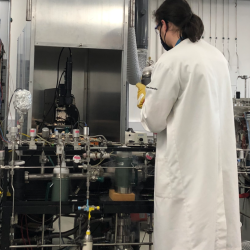I am a low temperature geochemist specialised in understanding the movement of water on very early formed, primitive (C and D-complex) asteroids. To do this I utilise isotopic tracers in aqueously altered, carbonaceous chondrite meteorites. I am passionate about marrying the two skills of petrography and geochemistry to forge a more holistic understanding of these bodies, for which we have very little geological context owed to lack of field data.
For my PhD I primarily used the O-isotopic toolbox, and I am extending my skillset at Cambridge by utilising the Li isotopic system, under the guidance of Professors Helen Williams and Edward Tipper.
My main interests revolve around the earliest years of the Solar System through to the first stages of planet formation in order to understand the origins of the asteroids and terrestrial planets. This encompasses wider, over-arching questions concerning how our own planet eventually became habitable. I maintain a wider interest in early Earth geology too, with a particular soft spot for the Northwest Highlands, especially the Lewisian basement in the Outer Hebrides.

